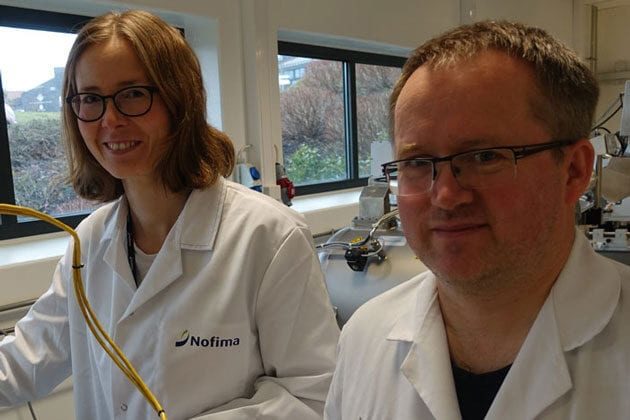New “super-component” can destroy listeria in food

Using a new “super-component” in combination with high-pressure treatment, researchers believe that they are getting closer to a formula that can destroy the dreaded listeria bacteria in food.
In the SafeFood research project, researchers at Nofima, the Norwegian University of Life Sciences (NMBU) and the Norwegian University of Science and Technology (NTNU) worked to find a solution to what can be done to make ready-to-eat products based on meat, fish and vegetables safer and to extend shelf life.
The growth of Listeria monocytogenes and the ability of the bacteria to repair cell damage and restore growth is reduced or inhibited after high-pressure processing.
“We now know a lot more about how listeria reacts to high pressure – all the way down to the gene level – and we can also see that different strains of listeria react differently, with some strains hardier than others. These results have recently been published in the scientific journal BMC Genomics,” says Nofima research scientist Trond Løvdal.
But high pressure alone is not always sufficient, it takes a bit more to make sure that the food is safe, has a longer shelf life and retains quality.
Promising results
When the SafeFood project was completed, the researchers were left with promising results that they have a strong desire to investigate further.
“So far we have only conducted model experiments, but it is looking very promising and we therefore want to take our research further,” Løvdal explains.
Løvdal and his colleague Tone Mari Rode are responsible for Nofima’s work on exploring the possibilities of combining high-pressure treatment with a further component, so that the two processes can be combined to destroy the dangerous food bacteria.
Bacteriocins
The “super-component” that the researchers refer to is bacteriocin. Bacteriocins are small molecules that the bacteria produce to inhibit the growth of other bacteria. At high pressure, some bacteriocins have been found to be able to destroy listeria.
The Norwegian University of Life Sciences (NMBU) and the Norwegian University of Science and Technology (NTNU) are also involved with the project. NTNU had the coordinating responsibility for the SafeFood project and is a natural part of what the researchers hope will be the continuation of the research. NMBU has experience of and is able to supply the bacteriocins.
“Our role is in the process technology. The kind of high-pressure machinery we have at Nofima cannot be found everywhere,” Tone Mari Rode explains.
Other challenges
High pressure alone would have been able to destroy the Listeria monocytogenes food bacteria, but there are other challenges associated with exposing food to high-pressure treatment.
“Too high a pressure will destroy the sensory qualities – colour and consistency – of e.g. smoked salmon and fish in general. The food looks like it has been boiled and the consistency is “wrong”,” says Løvdal.
Bacteriocins can also be used alone without being combined with high pressure, but this requires high levels of bactericins. This is also not good for food quality.
“This means we cannot use enough pressure to kill listeria. We would need to operate at a pressure of 400 or even up to 600 megapascals. The “magic” limit is around 300 megapascals. Such moderate pressure does not affect the sensory outcome. But it takes one more thing to destroy the listeria bacteria and the solution appears to be bacteriocins,” Løvdal says.
Spray, dip or packaging?
Whether the food products should be dipped in or sprayed with a solution to which bacteriocins have been added or whether it should be incorporated in packaging are some of the questions that now need to be explored.
“We don’t know if it will work, but we have to try,” Rode says.
One example of a food product that can be made safer using the new treatment method, while also retaining quality, is smoked salmon.
“From a food safety perspective, smoked salmon is a risk product, as it has not been heat-treated. It is also a major export item. The researchers claim that being able to guarantee food safety for such a product would reduce food waste.”

